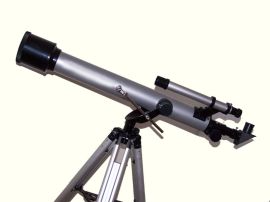 Copywriters blog about it. Literary agents yearn for it. Budding writers may know they need it, but they may be unsure how to get it (or even what it is). In a sense, voice is your platform. It’s the reason that you alone could write this story—that no one else could write it the way you did.
Copywriters blog about it. Literary agents yearn for it. Budding writers may know they need it, but they may be unsure how to get it (or even what it is). In a sense, voice is your platform. It’s the reason that you alone could write this story—that no one else could write it the way you did.
Many things contribute to an author’s voice. Word choice and sentence structure are part of it. But voice is also much deeper. It’s your world view, your values, your passion. In short, it’s your personality.
The websites of literary agents make it clear that they’re looking for a unique and compelling voice. If your manuscript sounds like every other submission in your genre, then no matter how well written it is, the agent will likely pass. Your personality must shine through.
Here are some of the components of voice:
Your values
David Keirsey grouped the 16 Myers-Briggs types into 4 temperaments, and identified the values unique to each. For example, the Idealists (NFs) and Guardians (SJs) value cooperation, while Rationals (NTs) and Artisans (SPs) value autonomy. But while the cooperative efforts of Guardians focus on preserving traditions and social institutions, Idealists seek to build stronger communities through personal growth. And while Artisans want autonomy so they can take advantage of immediate opportunities, Rationals focus on building systems and long-term strategies.
Think about some of your favorite novels, and consider how the voice might reflect one or more of these values. For example, I might argue that in The Help by Kathryn Stockett, Aibileen expresses Guardian values, Minny expresses Artisan values, and Miss Skeeter expresses Rational values. Yet the novel itself expresses Idealist values. The voices of the three point-of-view characters come together to give the novel a voice that’s different from the sum of its parts.
Your experiences
I’m a Pennsylvanian who’s made a home in North Carolina. I know how disorienting it is to leave your support system behind, and start a new life in a strange place with customs you don’t understand. My experience with this sense of alienation plays a role in my fiction.
But note that your experiences aren’t limited to things you’ve personally lived through. We’ve all been listening to stories—through books, TV, movies, and conversation—since we were born. The people you know also have a unique set of experiences that they can share with you. The old caveat, write what you know, is backwards. It should be know what you write. Research. Interview people. Travel if you have to. Draw on your past, but continue to build your store of knowledge.
Your interests
If you love jazz, set a couple of scenes in a jazz club. Include dialogue that could only be spoken by a jazz connoisseur. If you garden, include descriptions of trees and flowers that demonstrate your specific knowledge. These kinds of details add depth and authenticity to a scene.
Your interests may also affect the theme of your work. As a writer of women’s fiction, I’m fascinated by the effects of human evolution on behavior, particularly in the differences between men and women. In most primate societies, to avoid inbreeding, females stay in the troupe they were born into; males, on the other hand, are forced out when they reach sexual maturity, and must make their way in the world. Modern human females largely define themselves in terms of their relationships, whereas males define themselves in terms of identity. My fiction explores the conflicts that naturally occur as a result: for instance, the woman is trying to preserve the relationship but her partner is trying to preserve his identity. Or, conversely, a woman’s search for identity creates problems in her relationships.
Voice is one of those things that’s hard to define, but you know it when you see it. The best way to ensure that your voice shines through is to be authentic, to write from your core self, and to be fearless. If you’re not willing to take chances in your fiction, to expose the deepest parts of yourself, you won’t touch the reader’s heart. It’s that emotional connection to the characters that keeps readers engaged. A story without voice is a story that won’t sell. So don’t hold back. Write for all you’re worth.









 Copywriters
Copywriters